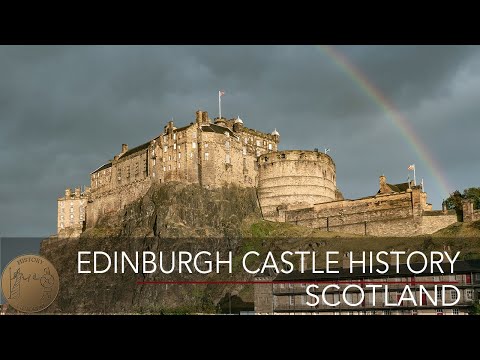
Sitting majestically atop Castle Rock, a volcanic plug that dominates the skyline of Edinburgh, Scotland’s capital city, lies the impressive and historic Edinburgh Castle. Known not just for its robust build and picturesque views, but also for its deep-rooted significance in Scottish history, this ancient fortress has stood the test of time. With records dating back to the Iron Age, its strategic location has made it a focal point of both conflict and celebration throughout the centuries.
#### Ancient Beginnings and Royal Residence
The history of Edinburgh Castle is as old as it is fascinating. Archaeologists have found evidence suggesting that the rock has been occupied since at least the Iron Age (2nd century AD), with the oldest part of the castle, St. Margaret’s Chapel, dating back to the early 12th century. This chapel was built by King David I of Scotland and is dedicated to his mother, Saint Margaret of Scotland.
Through medieval times, Edinburgh Castle grew into a significant royal stronghold. It was a favored residence of Scotland’s monarchs due to its formidable position and defensible nature. Many kings and queens were born here including James VI in 1566, who later became James I of England uniting the two crowns in 1603.
#### Military Stronghold
As much as it was a royal residence, Edinburgh Castle was also a military garrison. Its strategic importance made it central to various historic conflicts including the Wars of Scottish Independence during the 14th century. The castle changed hands multiple times between English and Scottish forces until it finally remained under Scottish control after Robert Bruce’s campaign.
During later periods like Oliver Cromwell’s invasion in 1650 and during Jacobite risings in 1745, Edinburgh Castle proved its worth as a military fortress. It successfully withstood sieges and assaults which are testament to its architectural strength and strategic planning.
#### Architectural Evolution
Edinburgh Castle’s architecture is a mixture of military utility and regal magnificence which evolved across centuries. The Great Hall commissioned by James IV in 1511 represents this dual nature beautifully; it served both as a grand ceremonial venue for state events and as an integral part of castle defenses.
The Half Moon Battery built after Lang Siege in 1573 under Regent Morton stands testament to post-medieval advancements in artillery technology at that time. Meanwhile, The Royal Palace added during reigns from James IV to James VI showcases Renaissance influences.
#### Modern Day Symbol
Today, Edinburgh Castle is one of Scotland’s most visited tourist attractions drawing visitors from around the globe who are eager to experience its history first-hand amidst stunning views over Edinburgh cityscape offered from its ramparts at nearly every turn.
The castle hosts various historical reenactments including those related to Mary Queen of Scots’ dramatic life events – further bringing alive Scotland’s turbulent past right before visitors’ eyes. Every year on November 30th – known as Saint Andrew’s Day – festivities are held within these ancient walls celebrating Scottish culture and heritage vigorously.
Moreover, one cannot talk about Edinburgh Castle without mentioning The Royal Edinburgh Military Tattoo – an annual series of military tattoos performed by British Armed Forces which takes place on Esplanade each August.
